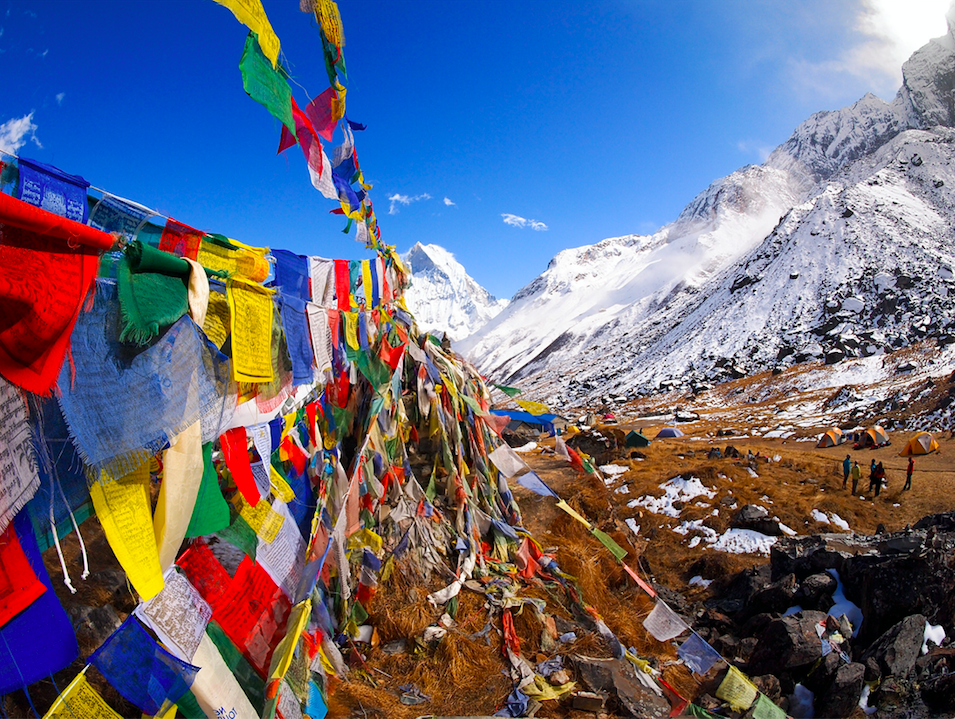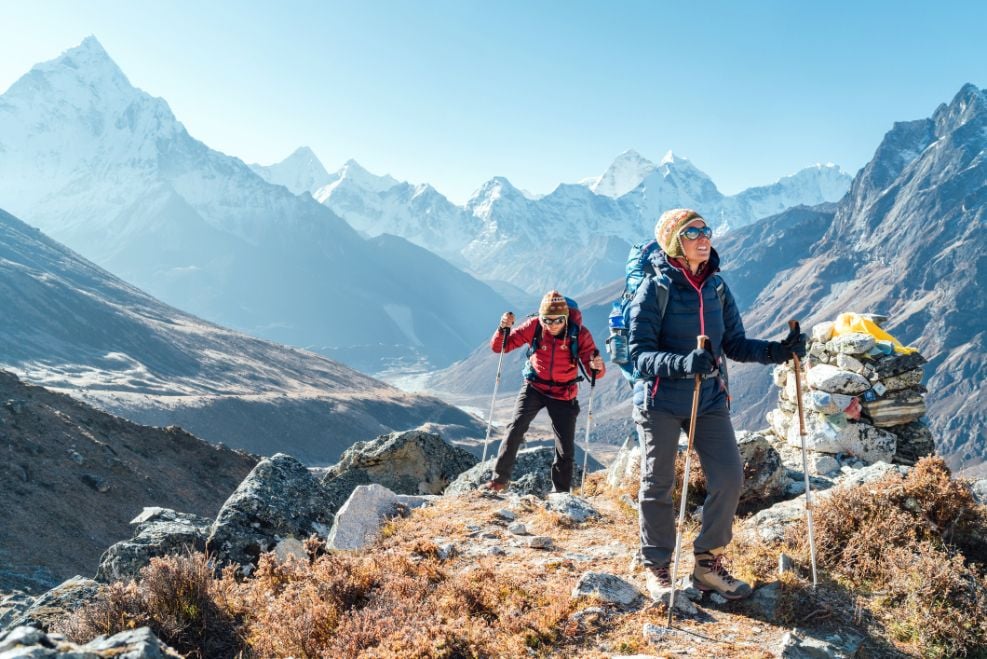
Although Nepal may look small on the map, it’s a very geographically and culturally diverse country that varies enormously from west to east, north to south. It’s also home to some of the highest mountains in the world, in the Himalayas.
Mountains have a way of isolating communities from each other while dividing eco-systems and terrain. While there are endless trekking trails throughout Nepal, some are more easily accessible, while others are more remote; some require camping, while in others you can enjoy high-end accommodation. Whatever kind of adventure you’re seeking - rugged, relaxed, basic, luxurious, cultural, wild - there’s a region of Nepal that will deliver what you’re after. Here’s a guide to the major trekking regions of Nepal.
Please note: On the 1st April 2023, the Nepal Tourist Board (NTB) made changes to the trekking laws for all foreign trekkers, cyclists, and mountain climbers visiting Nepal's mountain regions and national parks. All trekkers (solo or in a group) must now be accompanied by a licensed guide. To learn more about what this means for you, read our update on the Nepal trekking requirements.
The Major Trekking Regions in Nepal
Solukhumbu District (Everest)
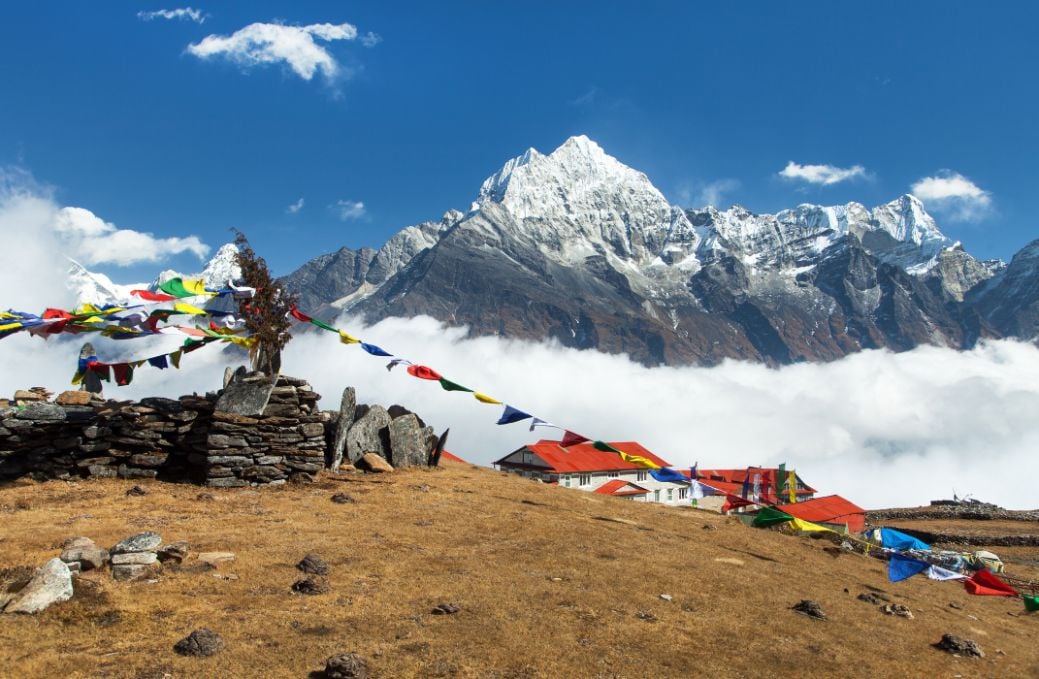
Solukhumbu District is where Mount Everest sits, and is also home to the Sagarmatha National Park. Most treks in/around Solukhumbu start with a flight from Kathmandu to Lukla, a small airstrip on the side of a mountain. But trekkers with a bit more time, or who want a bigger adventure, can take the ‘pioneers’ route’ in, starting at Jiri and so-named because this is the way the early Western explorers in Nepal accessed the region before the airport at Lukla was built.
The Everest Base Camp trek takes around two weeks, and is the most popular trek in Nepal – for good reason. The route passes through lush jungle, Sherpa villages and bustling mountain towns (such as Namche Bazaar), and allows close-up views of not only Everest but numerous other enormous mountains, including Lhotse and the beautiful Ama Dablam.

In the peak seasons, the EBC trek can get quite crowded. But, there are many other trails in the area that don’t see as many visitors, such as the Three Passes trek (challenging), Gokyo Lakes, or a side trip to the Thame Valley. It’s not hard to get out into the wilderness, even in one of Nepal’s most popular areas. There are lodges of all levels of comfort throughout the Everest region, from very basic to quite luxurious.
The Annapurna Himalaya
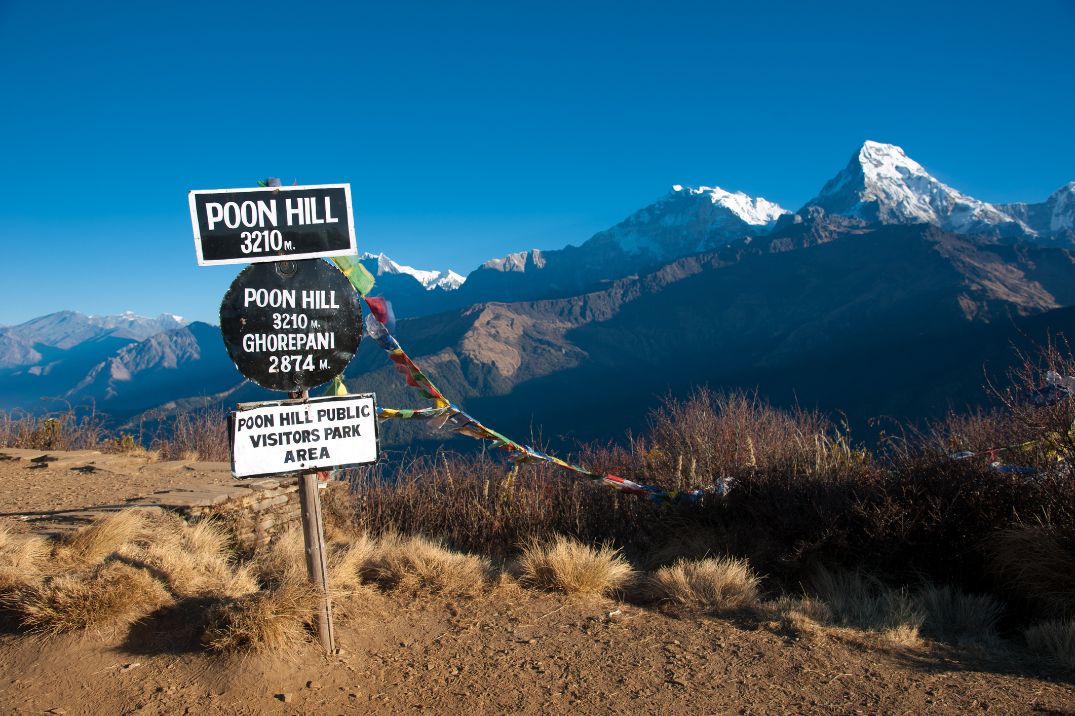
The Annapurna region is the second-most popular trekking region in Nepal. It is the area that lies to the north of the city of Pokhara, so is very accessible by car or bus from Pokhara.
The Annapurna Conservation Area is Nepal’s largest protected area, and many treks around the Annapurna Himalaya fall within it, such as the Annapurna Circuit and Annapurna Base Camp. It’s a large area that includes parts of the Manang, Mustang, Kaski, Myagdi, and Lamjung Districts.

A major advantage of trekking in the Annapurna region over the Everest region (if you’re in a position to have to choose!) is that many treks here don’t require back-tracking. That is, on the fifteen-day Everest Base Camp trek, the final days are spent retracing your steps back down to Lukla. On the Annapurna Circuit, for instance, you don’t need to back-track, making every day’s experience new.
Another major advantage is the region’s accessibility from Pokhara. It’s possible to do short treks of just three or four days in the Annapurna Himalaya, without the need for mountain flights. Popular short treks include the Poon Hill and Kopra Danda treks.
Road construction in the Annapurnas in the last few years have changed the character of some treks here. For instance, many trekkers now prefer to shorten the traditional 20-day Annapurna Circuit trek to avoid walking along a dusty road for the last few days. But while some trekkers lament the building of the road, it has also opened up other routes in the area that were a little harder to reach before. For an amazing wilderness trek with very few settlements, take a detour up the Nar Phu Valley; for a gorgeous lake, turn off the Annapurna Circuit to Lake Tilicho.
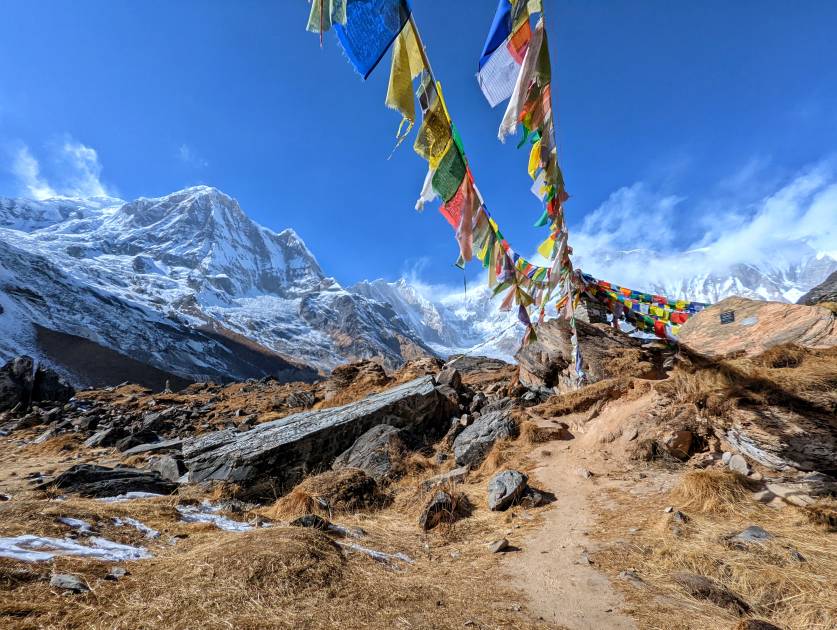
The infrastructure in the Annapurna region is pretty good, with comfortable lodges in some areas and basic ones in the remoter parts.
Mustang Region
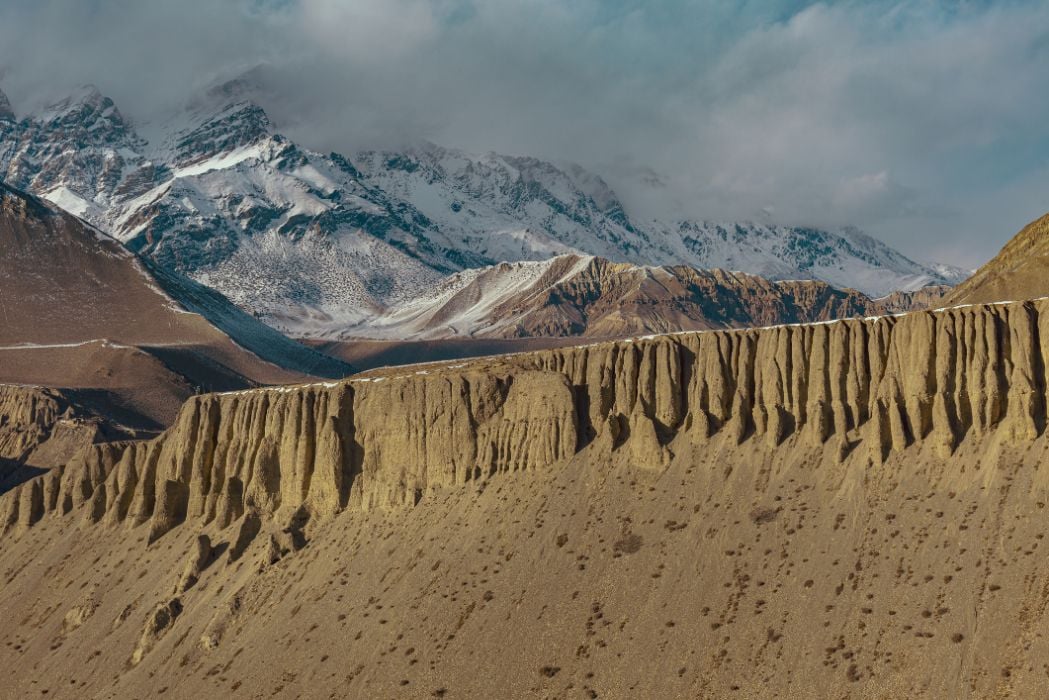
The Mustang region, although increasingly popular as a trekking destination, is still shrouded in a mystical aura because foreigners were prohibited from visiting Upper Mustang until 1992. It is still necessary to purchase an expensive permit (US$500 for ten days) to travel to Upper Mustang, but road construction, especially to Jomsom in Lower Mustang, have opened up Mustang a lot. Some treks in/through the Annapurna region pass through Lower Mustang, such as the Annapurna Circuit, which cross the Thorung La Pass and down to Muktinath, Kagbeni, and Jomsom.
A major reason to visit Mustang is that it lies in the rainshadow of the Himalaya, meaning that it doesn’t experience the monsoon (perfect for trekking June-August!) The landscape is dry and barren, with just small patches of green irrigated land around settlements. The culture here is predominantly Tibetan Buddhist, and the Hindu cultures of the Annapurna region give way to white stupas, monasteries, and prayer stone walls.
Lower Mustang doesn’t require an expensive permit, and the village of Kagbeni is the furthest north foreign travellers can go without the Upper Mustang permit. There are numerous shorter trails to be enjoyed around Lower Mustang, such as between Jomsom and Kagbeni, to the Bon village of Lubra, and up to the holy temple at Muktinath.
Upper Mustang is a very rewarding expedition for those with a bit more money and time. Highlights of the Upper Mustang region include ancient Buddhist meditation caves, rock murals, and the town of Lo Manthang, from where the Mustang royals once ruled.
Lower Mustang has some quite comfortable lodges (as well as basic ones). Variety is more limited in Upper Mustang, and camping is necessary in parts.
Dolpo and the Far West
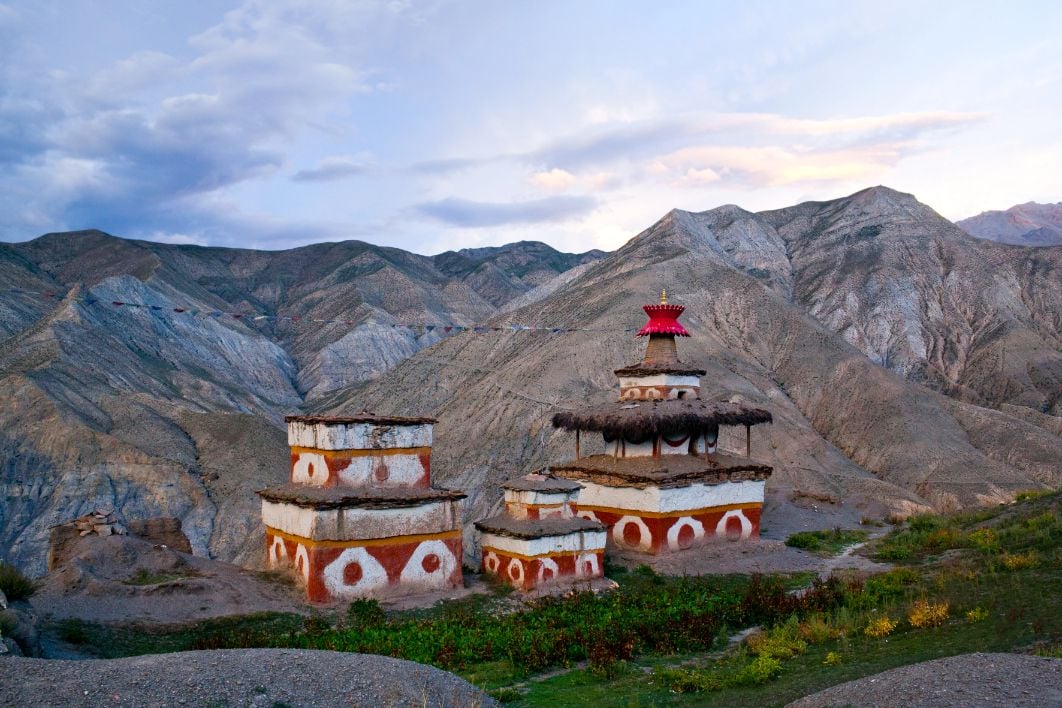
Like Mustang, Dolpo lies in the rainshadow of the Himalaya, and is also divided into the more easily accessible Lower Dolpo region, and the more restricted Upper Dolpo, which requires an expensive permit (US$500 for ten days).
Dolpo is located in far western Nepal, and is one of the most remote areas of the country. It is quite challenging to get to, so is a region better suited to travellers with a lot of time. Reaching Dolpo requires flying (or a long bus ride) from Kathmandu or Pokhara to Nepalgunj, and then to the small airstrip at Juphal. But, efforts to reach Dolpo will be rewarded many times over.
Travellers wanting to avoid the pricy permit can stay within Lower Dolpo and the Shey Phoksundo National Park. This is home to Lake Phoksundo, a startlingly blue freshwater lake. Trekking in Upper Dolpo is challenging, and not for first-time trekkers. But, those who make the effort have described this region as one of the most incredible on earth. Although not in Dolpo, another highlight of Western Nepal is Rara National Park, home to Lake Rara, the biggest and deepest freshwater lake in Nepal.
Tourism infrastructure is extremely limited in Far Western Nepal. Camping is necessary, as is bringing in your own food supplies.
Far East of Nepal
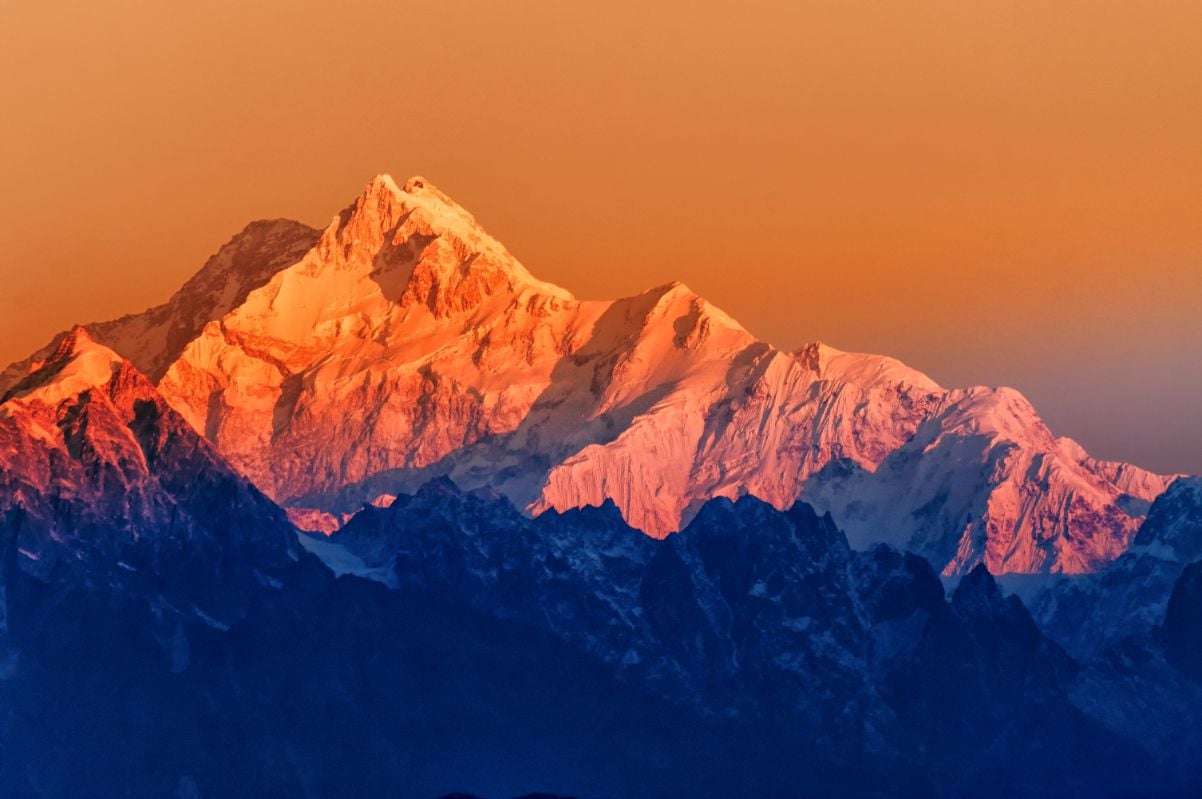
Eastern Nepal tends to be rather neglected by trekkers because of the dominance of Mount Everest in the east. But, there are other great treks that include Everest views with far fewer crowds. Trekking in the Arun Valley is an excellent alternative to the main Solukhumbu treks. You can trek through the Arun Valley to Lukla (then either continue to EBC or fly back to Kathmandu), or even trek through the Arun Valley to Mera Peak, a ‘trekking peak’.
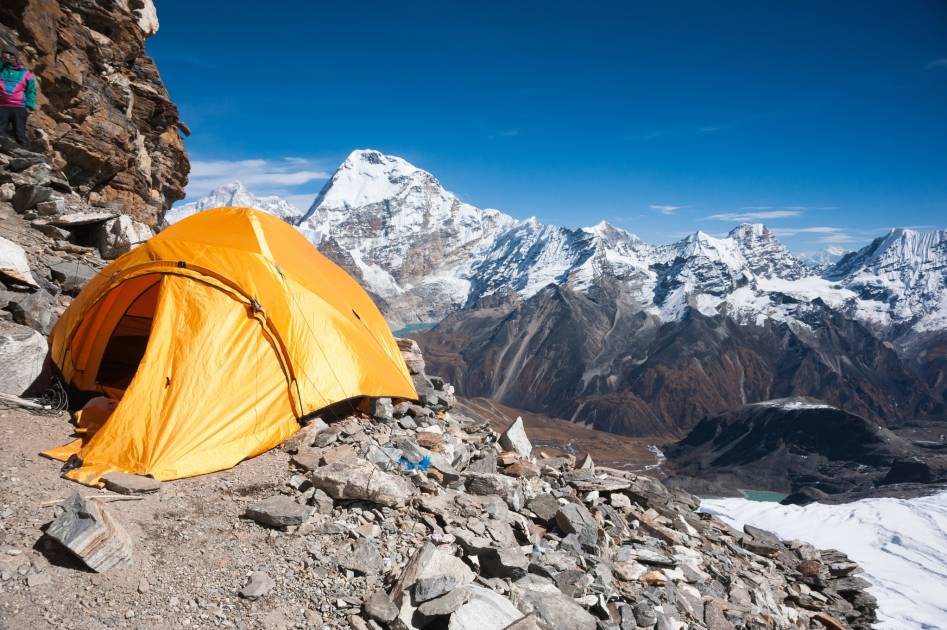
Even further to the east is Mount Kanchenjunga, the third-highest mountain in the world, on the border with the state of Sikkim, in India. The Kanchenjunga Base Camp trek takes around a month, and is rarely tackled by foreign visitors. All the more reason to head here!
Lodges are available in some places, but many treks in the east require camping.
Langtang & Rolwaling
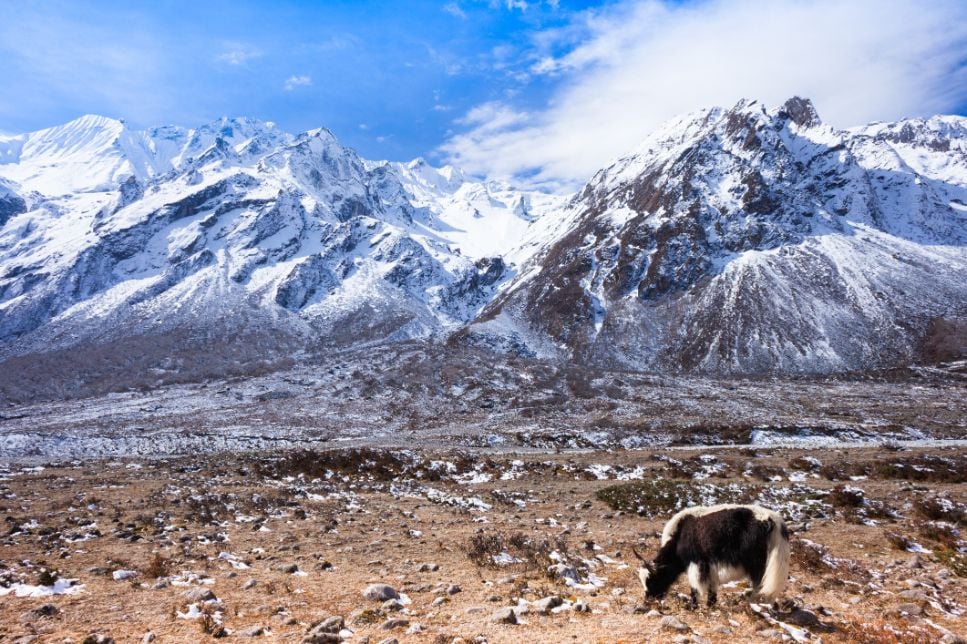
The Langtang Valley is located to the north-east of Kathmandu, on the border with Tibet, and is easily accessible by bus or private jeep. It suffered enormously in the earthquake of 2015, but trekkers are returning and helping rebuild the livelihoods of the locals of Langtang.
While the Langtang Valley doesn’t have any big-name mountains, that’s not saying much about the quality of the views here. Anywhere else in the world, Langtang Lirung, at 7345 metres, would be a big deal in its own right, but in Nepal, this peak is considered rather small! The attraction of trekking in the Langtang Valley is that you follow a river valley upstream, which then opens out to sweeping panoramic views of the Langtang range of the Himalaya.

There are a number of alternatives to the straightforward Langtang Valley trek in this area. One is the Tamang Heritage Trail, which stays in ethnic Tamang villages and emphasises learning about and interacting with the local people, who originated in Tibet. Another is the Lake Gosainkunda Trek, which branches off the Langtang Valley and visits this high-altitude lake, which is also a Hindu pilgrimage site.
The Rolwaling Valley is to the east of Langtang, also on the border with Tibet. You can trek in the remote valley itself, or cross to the east in the Khumbu Valley, although the latter is a very challenging trek.
Central Nepal (Gorkha, Manang, Manaslu)
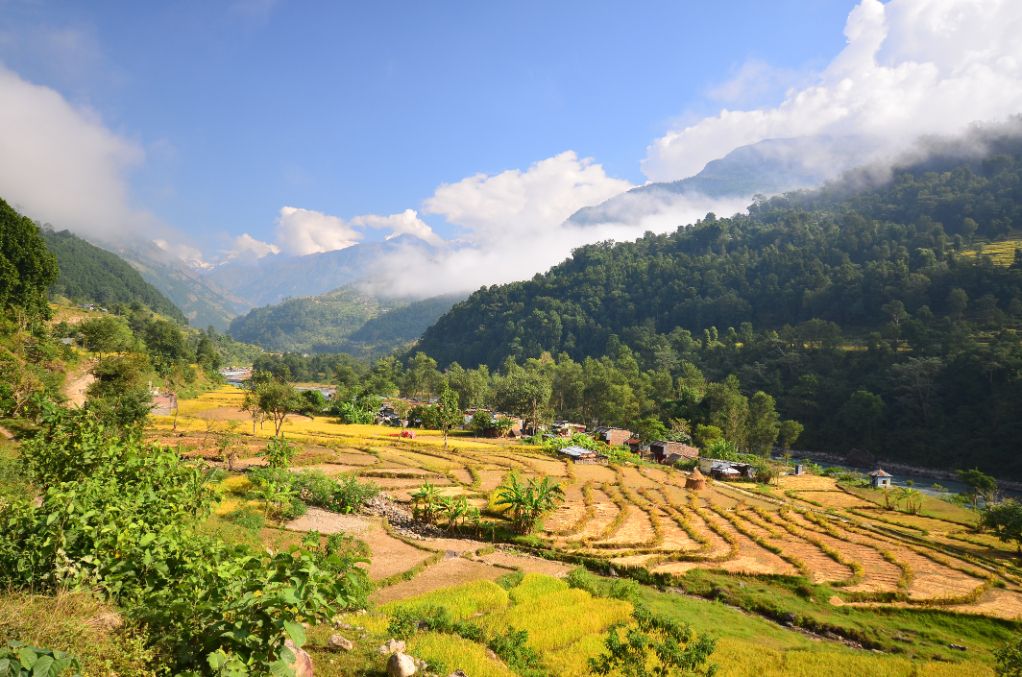
With Everest to the east and the Annapurnas to the west, Central Nepal is often overlooked. But, Gorkha District is very large, stretching all the way from the Trisuli River on its southern edge to the Tibetan border in the north, so encompasses many beautiful and interesting trails.
A highlight of Gorkha is the Manaslu Circuit trek. Although its development has lagged behind, the infrastructure on this trail is catching up and it’s not necessary to camp here any longer. The Manaslu Circuit is even considered one of the best treks in Nepal, as it combines everything that many trekkers are seeking—incredible mountain views, interesting villages, farmland, suspension bridges, a high pass for a physical challenge—with fewer trekkers than equivalent routes elsewhere in the country.
The Manang District lies to the west of Gorkha, and is often visited as part of the Annapurna Circuit, as the Thorung La connects Manang and Mustang Districts. The high-altitude region is known for its Tibetan Buddhist culture and for having the least rainfall of anywhere in Nepal. Manang can be a trekking destination in its own right, and doesn’t have to just be an after-thought of Annapurna-centric trips.
Kathmandu Valley and Nearby
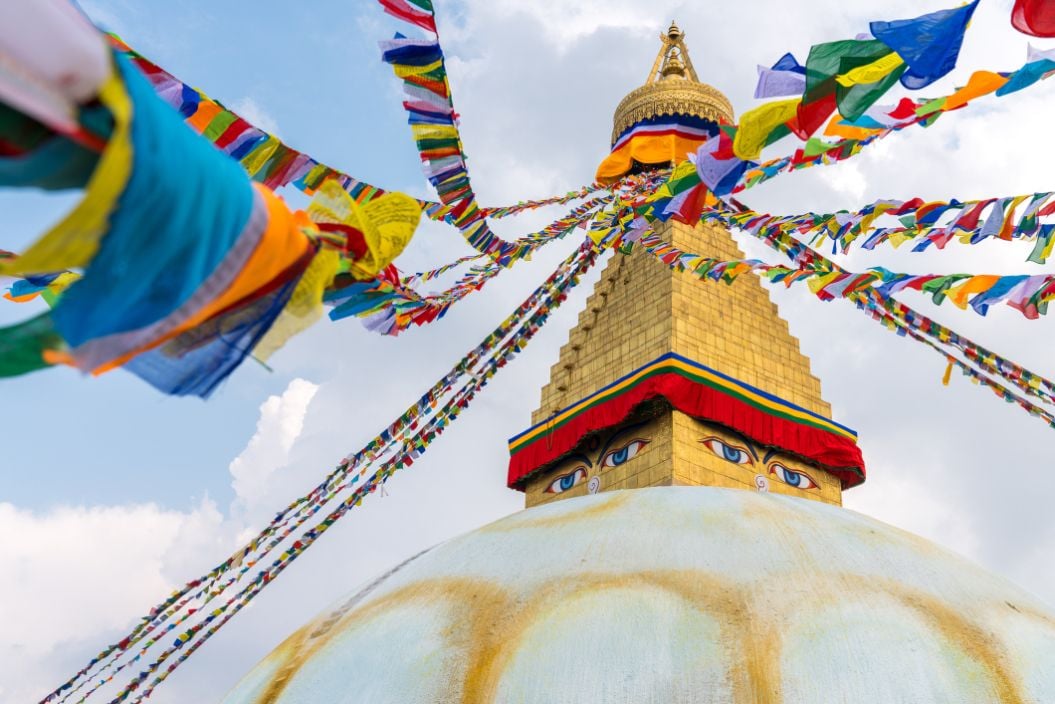
For trekkers with less time, or who need to stay closer to the city, trekking in and around the Kathmandu Valley is an excellent option. Though the Nepali capital is notoriously dusty and polluted, it doesn’t take long to get out into the fresher air and find the mountain views.
Kathmandu is ringed by hills (which elsewhere in the world would be considered mountains!) that can be climbed on day hikes. Popular trails up Phulchowki (2782 m) and Champa Devi (2278 m) on the southern edge of the valley can be done in a day. Shivapuri (2732 m) to the north can also be a day hike, but there are trails through Shivapuri National Park that can connect to other places to the north and east of Kathmandu for longer hikes.
Just outside the edge of the valley are the lovely towns of Dhulikhel, Panauti, Nagarkot, and Namo Buddha. Trekking to and between these places combines culture, farmland, and views of the snow-capped Himalaya beyond.
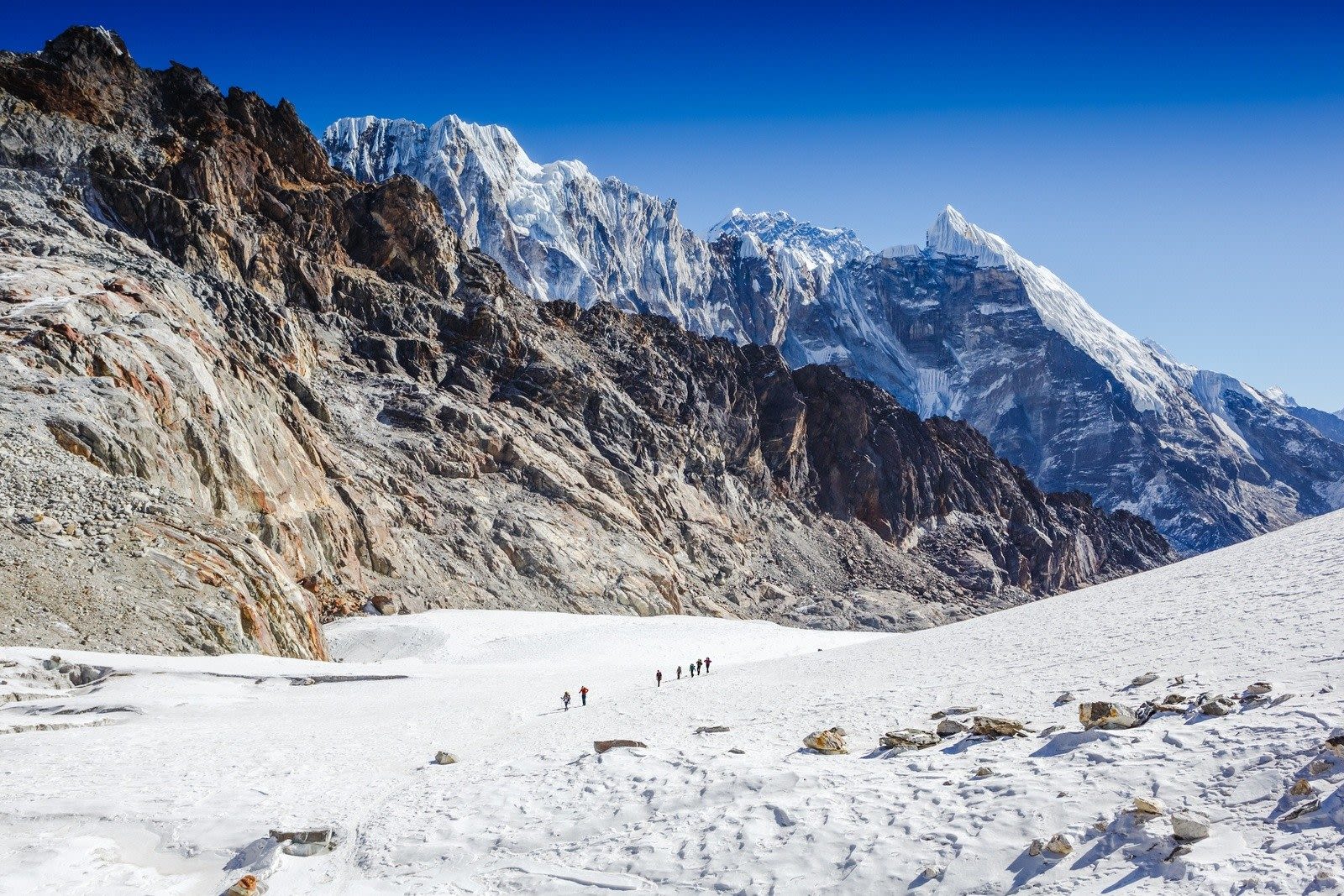
Pokhara Valley and Nearby
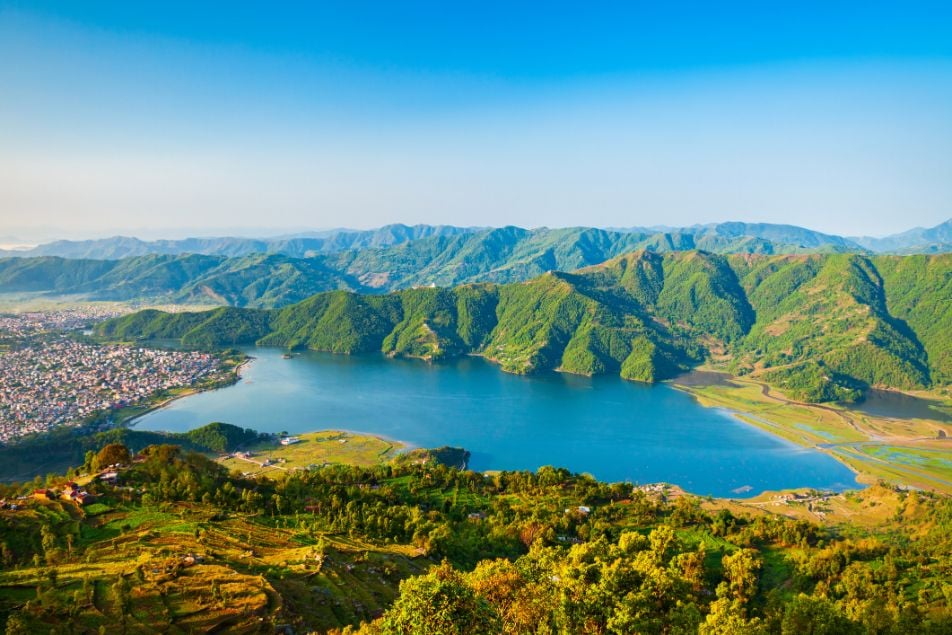
Like the Kathmandu Valley, if you can’t go too far into the wilderness, there are attractive trekking options around Pokhara. The Panchase Trek takes four days, and is ideal for families as it doesn’t ascend too high. Yet, there are still gorgeous views, as the Annapurna Himalaya around Pokhara can’t really be beaten when it comes to mountain views. Another option is the 3-4 day Royal Trek, so named because Prince Charles passed through the area in the 1980s.
Fancy heading out to Nepal? Explore our trekking in Nepal trips and other Nepalese adventures.

